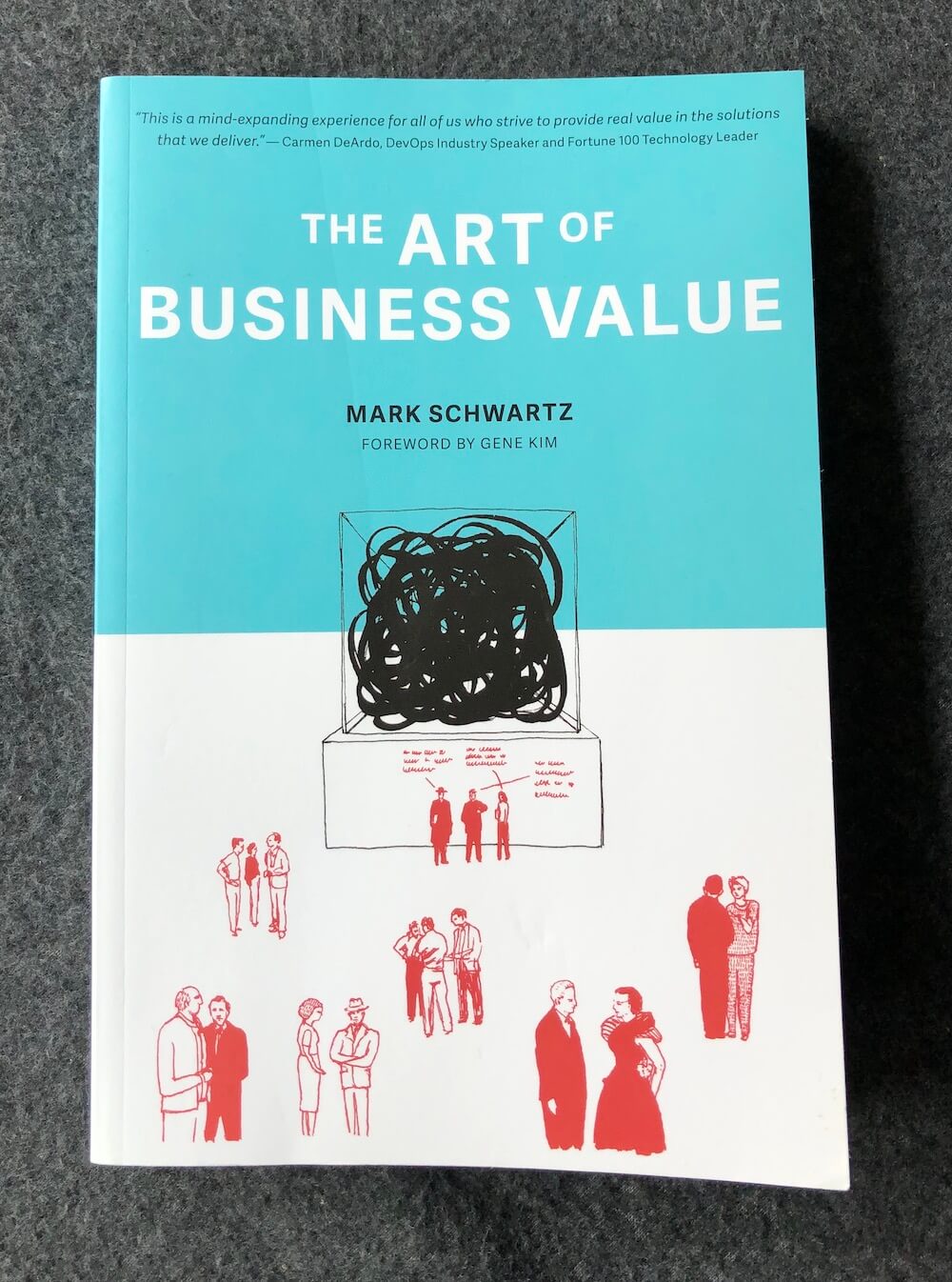The Art of Business Value
The first principle of the Agile Manifesto is: “Our highest priority is to satisfy the customer through early and continuous delivery of valuable software.” But who defines what’s valuable?
This is what Mark Schwartz sets out to discover in The Art of Business Value. Oodles have been written on the nature and practice of agile, but little scrutiny has been cast on what “business value” actually is and how and where one can find it.
Like Schwartz’s A Seat at the Table — which I absolutely loved — The Art is a quirky and fresh look at an under-explored fundamental of how technology is developed and adopted in business. It is written as a whodunnit that trots out the usual suspects of corporate life — business requirements, user needs, ROI, product owners, even bureaucracy! — only to find that business value has given us the slip.
Schwartz examines traditional ways how businesses measure value, showing the artifice of each and ultimately concluding that business value definitely encompasses more than what’s on the balance sheet. Scrum, the most prescriptive of the agile frameworks, declares the product owner to be the arbiter of business value; the problem with this is that this abdicates the team’s empowerment so enshrined by the Agile Manifesto.
I chuckled at the observation that developers are natural born bureaucrats. Developers are famous for complaining about corporate bureacracy! But actually, it’s kind of obvious: what else do (we) developers do all day but devise rules to handle and ensure standard behavior? Bureaucracy, though much maligned, exists for a reason. As Schwartz puts it, bureaucracy is the institutionalized memory of an organization to safeguard against undesirable behavior. By understanding an organization’s rules, you can learn what it values.
Reading The Art gave me flashbacks of my time working at Made by Many. As an innovation consultancy we used lean and agile methodologies to discover, test and launch new digital products. The integrated nature of discovery and development meant that it was often difficult to properly articulate what we actually did for our clients. We weren’t just brought in to build a product, because what that product was wasn’t yet known. (Or rather, we often were brought in to build something only on arrival to realize that that something wasn’t going to cut it.) Equally, we didn’t just research and analyze opportunities in a vacuum: how a product would work and fit within the business was integral to its viability — and impossible to elicit without actually “doing the work” with — and within — the business. (This is why what used to be talked about as innovation has shifted to transformation.)
The elusive nature of business value is why our teams found themselves playing roles that defied traditional agile team structures. We’d have a product owner from the client business, but the whole multidisciplinary team participated in stakeholder interviews, on-site shadowing and “provoking and observing” the business to see how it reacted. As a result, our clients often found that hiring MxM was an invasive process.
The necessity of discovering and defining business value was something that Made by Many learned the hard way: it is, effectively, a precondition for a project’s success. Without this, the fruits of our labor, grafted onto the business, would wither and die on the branch.
Postscript: I read The Art of Business Value in October 2020 and wrote this note then. I have no recollection if I had more to say about the book.
